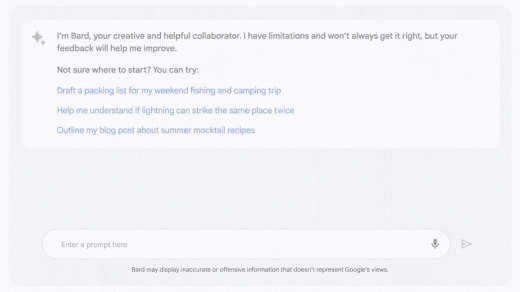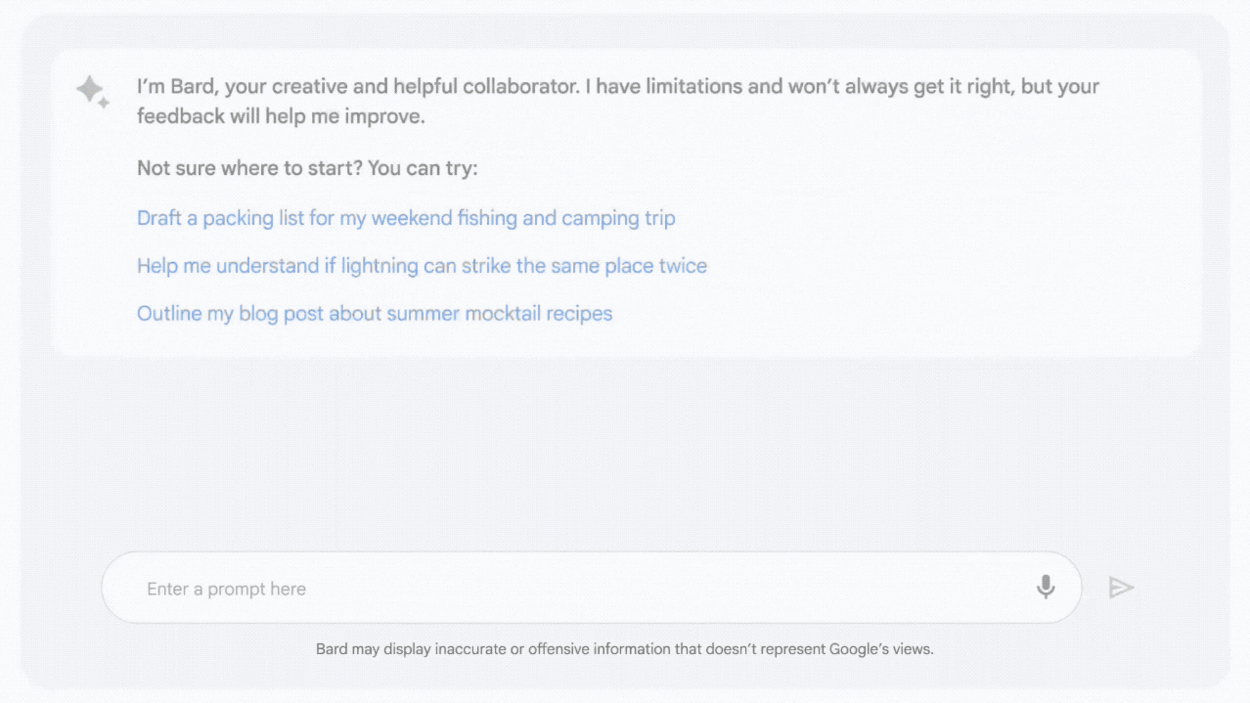Google is releasing its Bard AI chatbot to the public
Google says its ready to let the public use its generative AI chatbot, Bard.
The company will grant tens of thousands of users access to the bot in a gradual rollout that starting Tuesday.
Google says people will use the chatbot, which will be available online and as a mobile app, for things like generating ideas (“Bard, how do I keep my plants alive?”), researching ideas (in combination with Search), and drafting first drafts of letters, invites, or proposals.
Google originally announced Bard February 6, alongside some generative AI search functions and developer tools. On March 14, it announced that it will integrate generative AI features across the apps in its Workspace productivity suite.
But today marks the first time that Google has released a generative AI chatbot powered by a large language model to the public. Google says the bot is powered by a lightweight and optimized version of LaMDA, and will be updated with newer, more capable models over time.
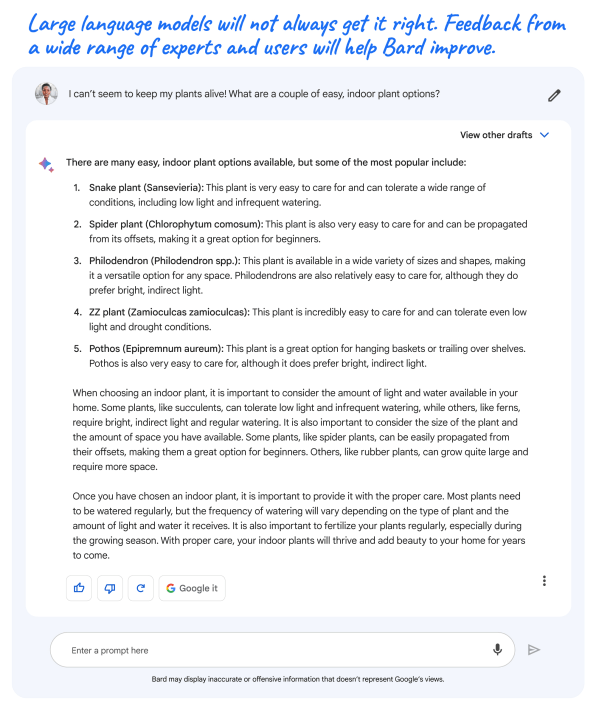
Eli Collins, VP of product, Google Research, says his group has been working on language models since 2015, two years before Google’s landmark paper on transformer models that led to current large language models such as the OpenAI GPT models that power ChatGPT. Collins says his group has come to a point in its understanding and development of generative AI where it’s ready to release it to the public.
Google, he says, learned a lot about how Bard behaves from Google employees who have been using the bot internally, and now wants to learn even more from users outside the company. Collins also acknowledges that the surprising popularity of OpenAI’s ChatGPT has factored into Google’s decision to release Bard to the public now.
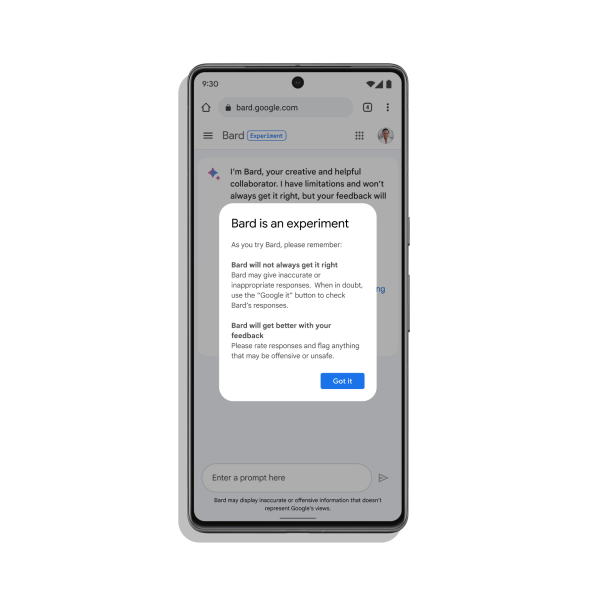
In a demo Monday, Collins asked Bard how he might get his son more interested in bowling. One of the bot’s suggestions was to throw a bowling party. That’s when Collins hit the Google Search button at the bottom of the chat interface. This led to some search results in another tab. The top two results in the search were sponsored links to a publication and a kids activity site that offered information on party ideas for kids. Below that was a list of local bowling allies. So most of the usable information came from the search, but Bard helped Collins zero in on what to search for.
Google is taking pains to emphasize that Bard is a work in progress. The company refers to it as an “experiment,” a term OpenAI nor Microsoft use to describe their generative AI bots. Google seems keen to point out that Bard is prone to making factual errors or simply inventing facts (“hallucinating”): Just below the bot’s prompt window is the statement “Bard may display innaccurate or offensive information that doesn’t represent Google’s views.” And the statement is true. Bard does make factual errors. While Bard can be used in conjunction with Google Search (there’s a Google Search button on the chat interface), by itself it may be most useful as an idea generation tool.
Google VP of Product Sissie Hsiao points out that the same traits and capabilities that lead Bard to hallucinate also allow it to do creative things such as write poems and stories. In other words, it makes up facts just like it makes up stories.
Bard has other guardrails around it. The number of back-and-forths per conversation is limited, although Google isn’t saying what the limit is. The company is also blocking Bard from generating computer code, a capability it hopes to add in the future.
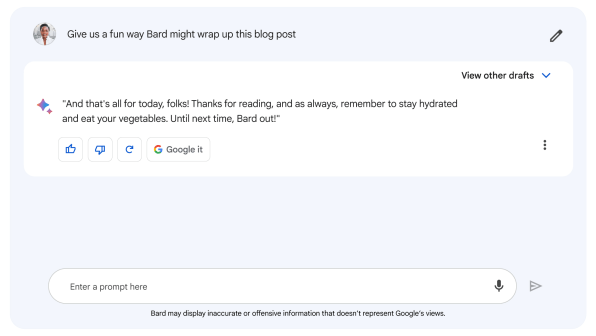
It also plans to add multimodal outputs (text plus images, video, or audio), and add support for more languages.
Interested users can sign up to try Bard via the wait list at bard.google.com.
(33)

